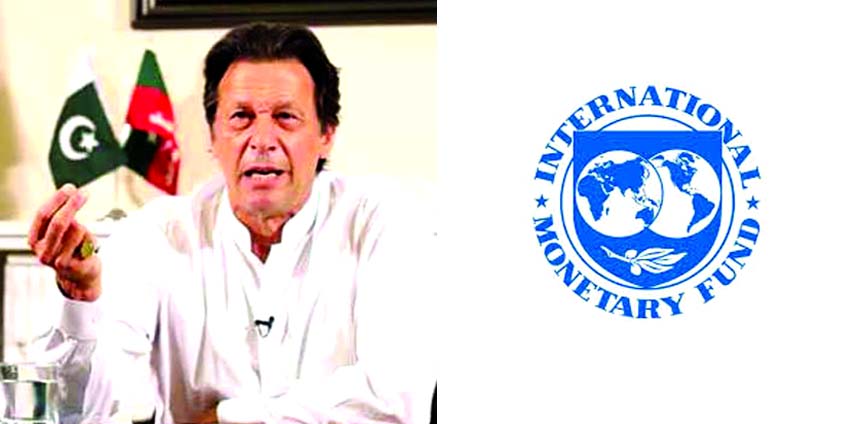
AFP, Islamabad :
Once Pakistan’s election winner Imran Khan forms a government, there will be little time to bask in his triumph:
the country’s next prime minister will inherit a critical economic situation, and analysts say he must act fast.
The new leadership may be forced to seek a bailout from the International Monetary Fund (IMF) in the coming weeks.
Here are some questions and answers about Pakistan’s predicament:
Pakistan is on the verge of a balance-of-payments crisis, which threatens the stability of its currency and its ability to repay debts or pay for imports.
Its budget deficit has grown steadily over the past five years, from four percent to 10 percent of GDP.
Imports have skyrocketed, mainly due to rising oil prices. Between July 2017 and March, about 70 percent of the country’s import bill was for energy, machinery and metals, according to a State Bank of Pakistan report.
Meanwhile, exports – mainly textiles – have increased only slightly.
As a result, the country’s foreign currency reserves have declined to about $10.3 billion, according to recent figures given by the caretaker government.
This covers less than two months of imports, analysts say. Meanwhile the rupee has been devalued four times since December, fuelling inflation.
“We borrowed like crazy in the last four to five years, so it’s time to repay. But we don’t have… reserves,” former finance minister Hafeez Pasha told AFP.
Pakistan has gone to the IMF repeatedly since the late 1980s. The last time was in 2013, when Islamabad got a $6.6-billion loan to tackle a similar crisis.
Once Pakistan’s election winner Imran Khan forms a government, there will be little time to bask in his triumph:
the country’s next prime minister will inherit a critical economic situation, and analysts say he must act fast.
The new leadership may be forced to seek a bailout from the International Monetary Fund (IMF) in the coming weeks.
Here are some questions and answers about Pakistan’s predicament:
Pakistan is on the verge of a balance-of-payments crisis, which threatens the stability of its currency and its ability to repay debts or pay for imports.
Its budget deficit has grown steadily over the past five years, from four percent to 10 percent of GDP.
Imports have skyrocketed, mainly due to rising oil prices. Between July 2017 and March, about 70 percent of the country’s import bill was for energy, machinery and metals, according to a State Bank of Pakistan report.
Meanwhile, exports – mainly textiles – have increased only slightly.
As a result, the country’s foreign currency reserves have declined to about $10.3 billion, according to recent figures given by the caretaker government.
This covers less than two months of imports, analysts say. Meanwhile the rupee has been devalued four times since December, fuelling inflation.
“We borrowed like crazy in the last four to five years, so it’s time to repay. But we don’t have… reserves,” former finance minister Hafeez Pasha told AFP.
Pakistan has gone to the IMF repeatedly since the late 1980s. The last time was in 2013, when Islamabad got a $6.6-billion loan to tackle a similar crisis.

